






| Common Cockchafer (Melolontha melolontha (Linnaeus, 1758)) |







|
|
Scientific name: Melolontha melolontha (Linnaeus, 1758) Common name: Common Cockchafer French name: Hanneton commun Order: Coleoptera Family: Melolonthidae Wingspan : 25 to 30 mm. Biotope: Cultivated areas, gardens, orchards, woodland edges, meadows. Geographic area: Europe north to mid Scandinavia. Missing in the Iberian Peninsula and in Italy. Observation period : From April-May to early summer. Due to the life cycle lasting 3 years or more, populations may vary from year to year. |
The Common Cockchafer is a large coleoptera with reddish brown elytra hiding tow long membranous wings. The small and flat head bears two long antennae ending with 7 "leaves" on males and only 6 "leaves" on females. The thorax is wider than the head. It is black with russet hairs. The legs end with two curved hooks. The abdomen has a pointed tip and shows triangular white marks on each side. The Common Cockchafer has a noisy flight. The Common Cockchafer larva is a large white grub living under the ground. It feeds on roots and then can cause important damage to cultivated plants. Adult Common Cockchafer feed on leaves. The populations have drastically decreased because of the use of pesticide in regions of intensive agriculture. They tend to increase today because there is a higher control on the use of the pesticides. |
| [To know more about the Common Cockchafer] [Next picture] [Top] |
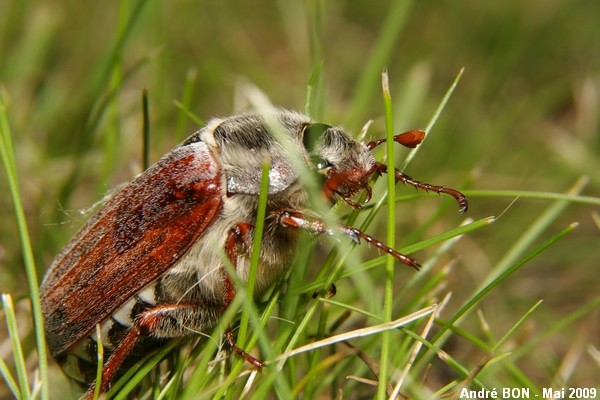
|
I have found this Common Cockchafer in the rain water collector tank. I have rescued it and put it down on the lawn. I took this chance to shoot a few pictures and then let it in peace to recover some strength. |
| [To know more about the Common Cockchafer] [Next picture] [Previous picture] [Top] |
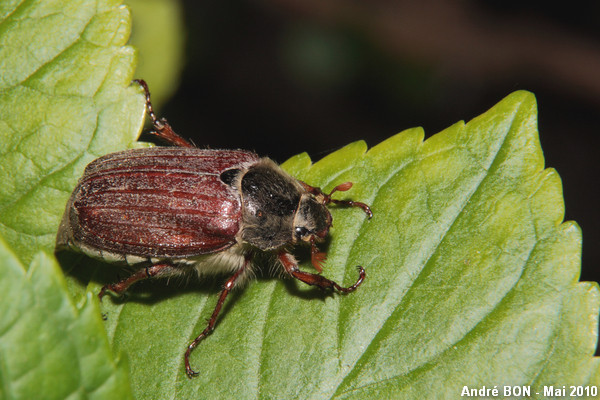
|
Exactly one year after the rescue, I have found again one Common Cockchafer suffocating in water at the same place. I have then repeated the "Baywatch" episode. |
| [To know more about the Common Cockchafer] [Next picture] [Previous picture] [Top] |

|
The six "leaves" on the tip of the antennae indicate a female. |
| [To know more about the Common Cockchafer] [Next picture] [Previous picture] [Top] |

|
You can clearly see, on this picture, the two curved hooks on the tip of the legs. |
| [To know more about the Common Cockchafer] [Next picture] [Previous picture] [Top] |
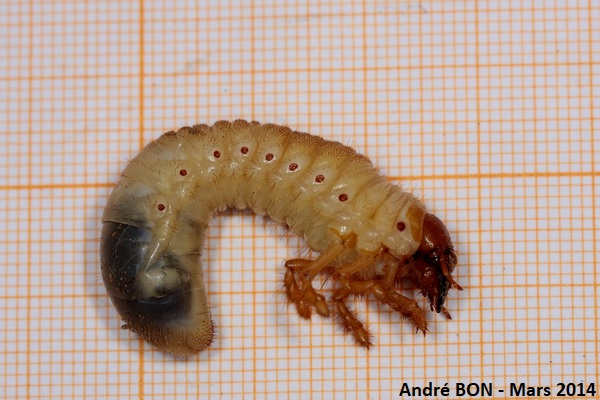
|
I have found this Common Cockchafer larva while digging the ground under my Hazelnut tree. I am used to often observing Rose Chafer larvae in my compost heap which is very close but they are easy to tell apart. Rose Chafer larvae have a smaller head, a enlarged rear tip and especially short legs, shorter than the width of the body. Common Cockchafer larvae have a larger head, a slender rear tip and legs which are longer than the width of the body. |
| [To know more about the Common Cockchafer] [Next picture] [Previous picture] [Top] |
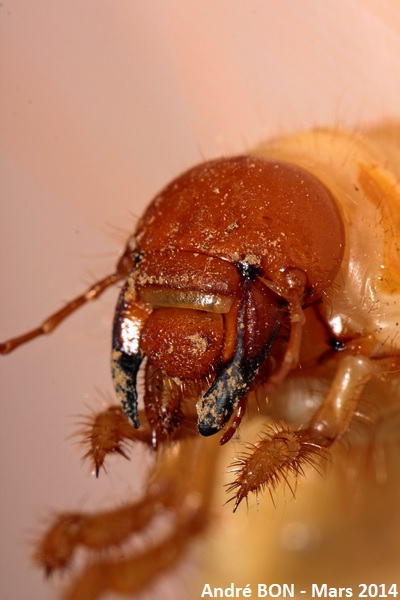
|
Close up view of the head and of the mandibles. |
| [To know more about the Common Cockchafer] [Previous picture] [Top] |
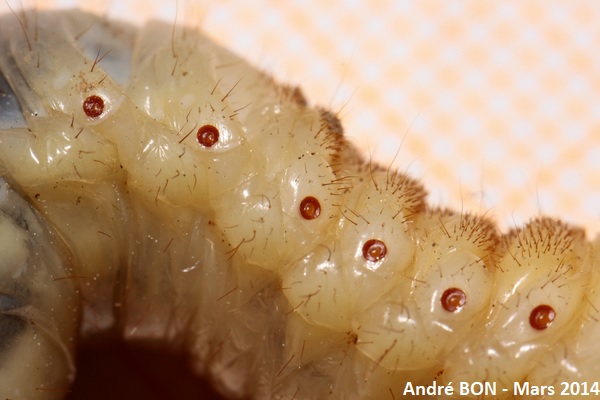
|
Close up view of the body of the larva. |